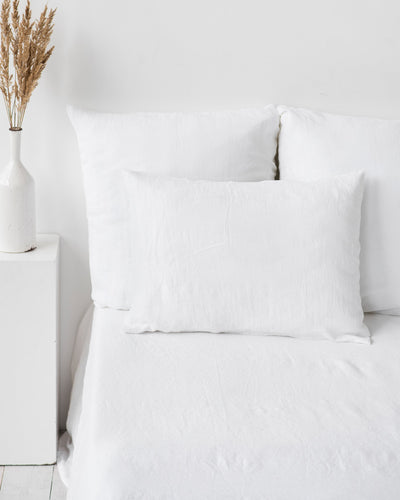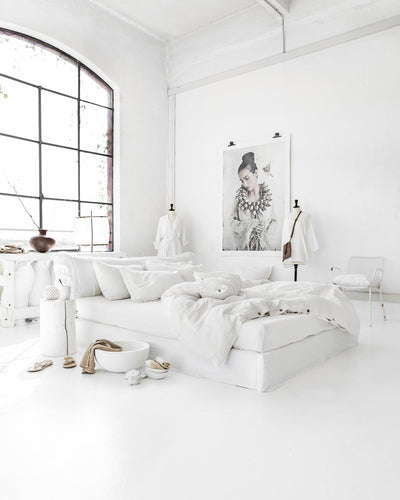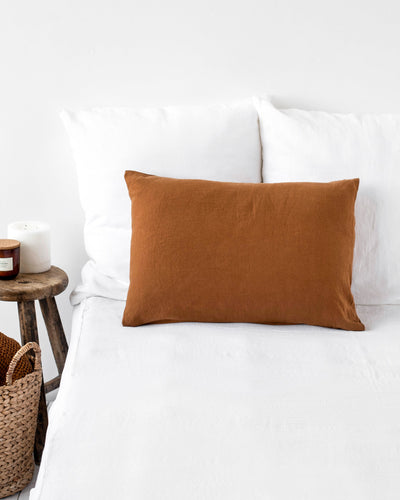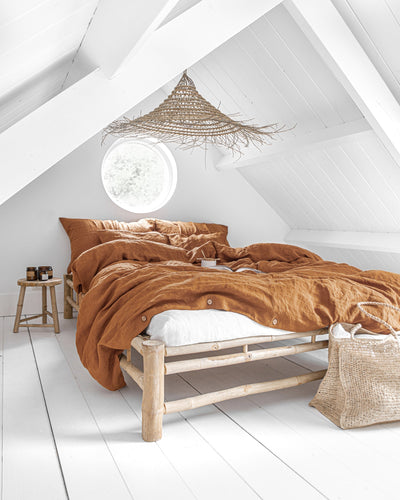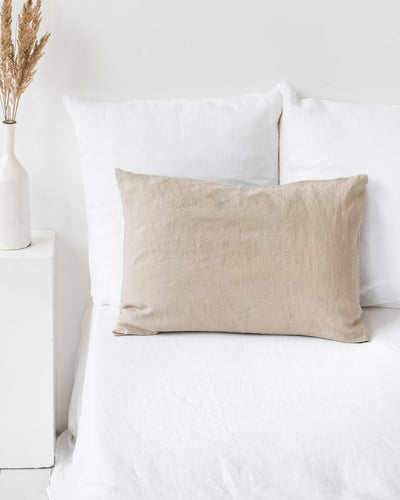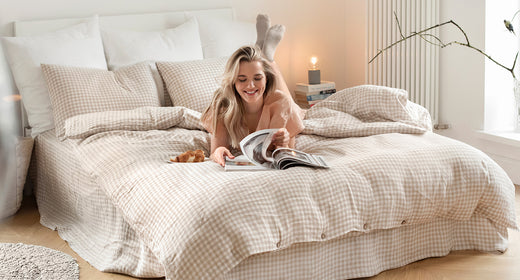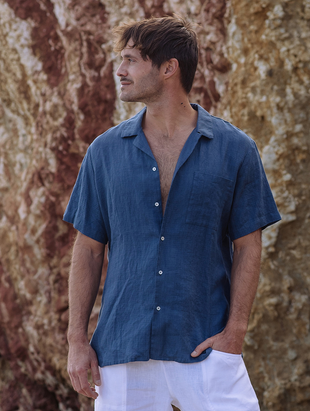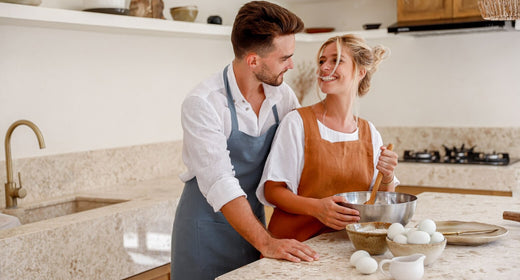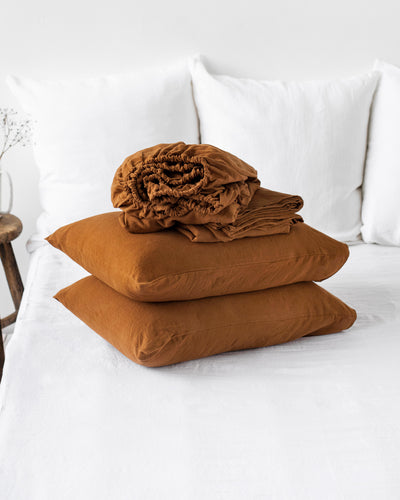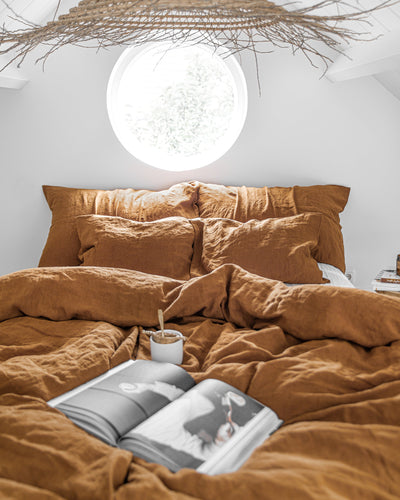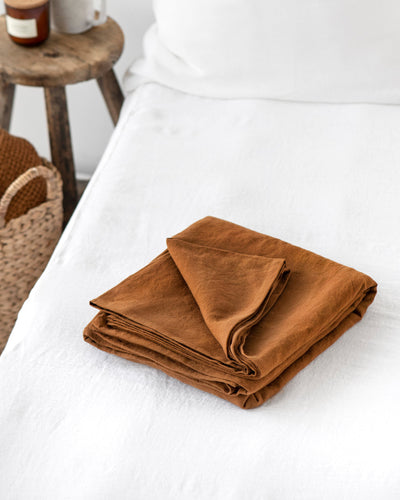
Beneath the Surface: What is Linen Made Of?
Linen, a material renowned for its simplicity and comfort, is highly sought after for its natural qualities. To understand "what is linen made of," we look into its origins. Essentially, linen is crafted from the fibers of the flax plant, a straightforward source material. These fibers undergo a series of processes to transform into the breathable, cool, and durable fabric that linen is known as.
In this article, we'll offer a clear understanding of the composition and production of linen, shedding light on why it's a popular choice in various aspects of our daily lives.
What Is Linen Fabric?

Linen is a natural textile derived from the fibers of the flax plant (Linum usitatissimum), known for its simplicity and versatility. For centuries, linen has been cherished for its cool and breathable qualities, making it a top choice for warm-weather clothing. Its distinctive texture, often slightly coarse and uneven, adds to its rustic charm. Linen's absorbent nature efficiently wicks moisture away from the body, ensuring comfort in hot and humid conditions. Its durability has earned it a reputation for standing the test of time.
Linen's understated elegance and timeless appeal have made it a staple in fashion, home textiles, and various other applications. Whether in casual summer attire or crisp bed linens, linen fabric continues to be appreciated for its unique blend of simplicity and sophistication.
Short History of Linen
Linen, among the world's oldest textiles, has a rich history dating back thousands of years. It all begins with the cultivation of flax, a resilient plant grown since ancient times in regions like Egypt and Mesopotamia. Evidence of linen production from around 10,000 years ago showcases its enduring legacy. Over time, linen became highly prized for its exceptional qualities like breathability, moisture-wicking, and durability. Ancient Egyptians favored it for clothing and wrapping mummies, and it found its way into various civilizations, from the Greeks and Romans to medieval Europe. During the Renaissance, linen symbolized luxury and refinement, often gracing the tables and bedrooms of the nobility. Today, linen remains a timeless and eco-friendly textile cherished for its natural simplicity and enduring charm.
What Is Linen Made Of?
Linen consists of natural fibers derived exclusively from the flax plant. These fibers, extracted, processed, and spun into threads, are responsible for linen fabric's unique texture and characteristics. This natural material is the core element that defines linen fabric.
How Is Linen Made?


The intricate process of linen production comprises a series of meticulously executed stages, each of which plays a pivotal role in shaping this beloved fabric. Let's go through each of these steps in more detail:
1. Planting
The journey of linen commences with the careful cultivation of flax plants. These plants are typically sown in cool, temperate climates, where they thrive under specific conditions, setting the stage for the linen-making process.
2. Growth
Flax plants are incredibly particular about their environment. They demand moderate rainfall and well-drained soil to prosper. These optimal growth conditions are crucial in ensuring the quality of the linen produced.
3. Harvesting
The critical moment in the linen production cycle arrives when the flax plants reach maturity. This is indicated by the transformation of their blue flowers to a brown hue, signifying that they are ready for the next phase.
4. Fiber separation
After the flax plants have been harvested, they undergo a unique process known as retting. During retting, the plants are submerged in water. This seemingly simple act facilitates the separation of valuable fibers from the less desirable woody stalks. The timing and execution of retting are essential, as they directly affect the quality of the fibers extracted.
5. Breaking
Once the retting process is complete, the dried stalks undergo a mechanical "breaking" procedure. This step is crucial in eliminating the outer woody components, leaving only the valuable inner fibers that will ultimately contribute to the linen's texture and strength.
6. Combing
To ensure the purity of the linen fibers, the remaining strands undergo a thorough combing process. This meticulous combing removes lingering impurities, resulting in long, fine strands perfectly suited for the subsequent spinning process.
7. Spinning
These refined flax fibers, now cleaned and sorted, are carefully spun into yarn or thread. This is the foundation upon which the entire linen fabric is built. The spinning process' quality and consistency directly impact the fabric's texture and overall integrity.
8. Reeling
As the spun thread emerges, it is wound onto reels, a necessary preparation for the forthcoming weaving or knitting stages. This step ensures that the linen thread is neatly organized and ready to transform into the fabric we know.
9. Drying
The final step in this intricate journey is thoroughly drying the linen thread. Ensuring that the thread is entirely dry is essential, as any residual moisture could compromise the quality and durability of the fabric. This step provides the finishing touch, readying the linen thread for the weaving or knitting.
What Is Linen Used For?

Linen finds versatile applications across various aspects of daily life. Its breathable and moisture-wicking properties make it a favored choice for clothing, especially in warm climates, where it's used for shirts, dresses, and summer suits. Home textiles, linen bed sheets, and towels are prized for comfort and absorbency. Linen's durability lends well to upholstery and drapery, enhancing living spaces. Additionally, this fabric is utilized in kitchen textiles like aprons and dish towels due to its practicality.
Beyond fashion and interiors, linen has been employed in industrial settings for its strength and resistance to high temperatures. Its adaptability and timeless appeal ensure that linen continues to play a significant role in modern living.
The Bottom Line
In conclusion, exploring the question "What is linen made of?" reveals the simplicity and natural beauty that underlie this timeless fabric. Linen's origin in flax fibers, cultivated and transformed through careful processes, encapsulates its enduring appeal. Its breathability, durability, and versatility make it a cherished fashion and home decor textile. As we uncover the essence of linen, we gain a deeper appreciation for a material that has stood the test of time, offering comfort and elegance in every thread.
 United States
United States
